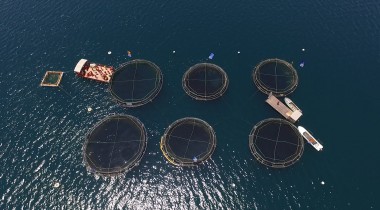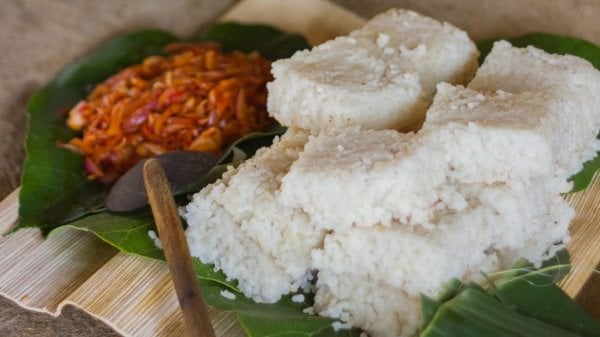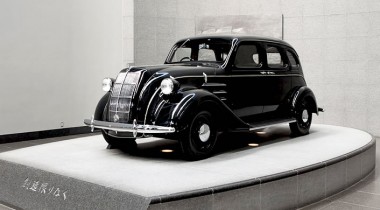
Admit it, everyone you know has owned a Toyota at some point in their lives. Whether it is a Corolla or a Camry or even a Land Cruiser or a Lexus, the Toyota emblem is burned into your mind because you see it everywhere. Little known about the brand, because it is clearly dominating the 21st century, are its simple beginning, the troubles it faced on the road to becoming one of the leaders of the automobile industry, and how it made a mark across the world, including in Sri Lanka.
Humble Beginnings And Troubled Times
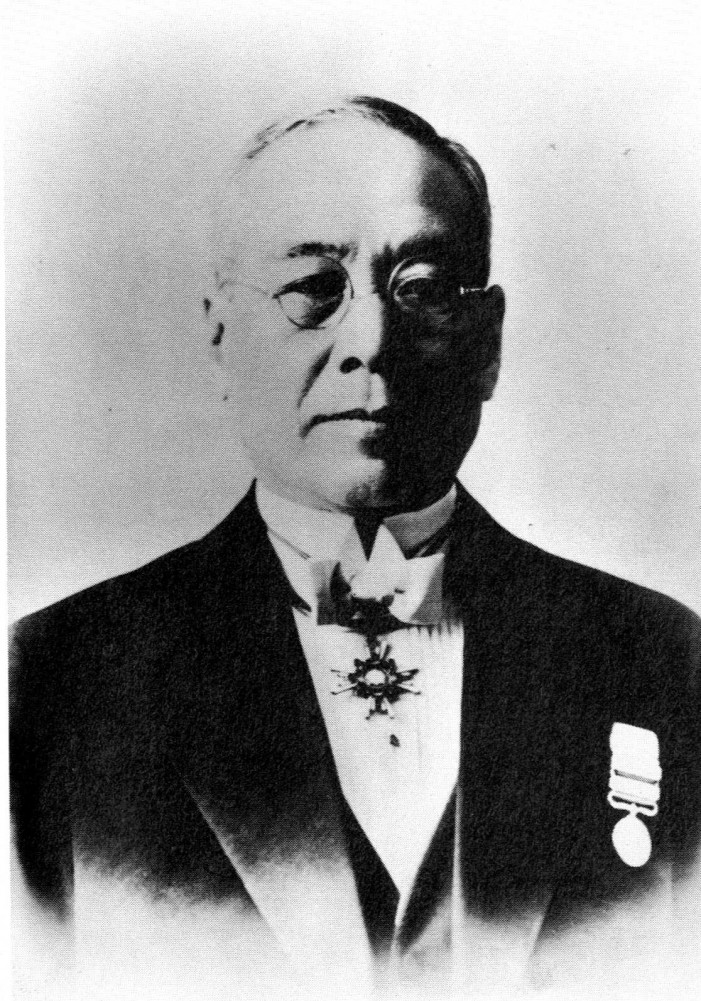
Sakichi Toyoda, Japanese inventor and industrialist
On February 14, 1867, Sakichi Toyoda, one of the world’s greatest known inventors, was born into a poor and struggling family. Sakichi’s father, Ikichi, was a skilled farmer and carpenter, and his mother Ei was a weaver. According to old Japanese tradition, a son must always follow his father’s footsteps, but Sakichi would dream of becoming an inventor.

Birthplace of Sakichi Toyoda
Sakichi spent his days watching his mother Ei struggling to make a living weaving thread into cloth. Setting aside societal expectations, he pulled out a pencil and paper, and started working on a design for a loom to simplify his mother’s workload. He visited factories and conventions and finally, in 1891, Sakichi combined his knowledge with his desire to become an inventor, and patented his first wooden handloom — the Toyoda Wooden Handloom. Unlike his mother’s handloom, the Toyoda handloom only required the use of one hand instead of two, and efficiency was increased by 40-50 percent.

The Toyoda Handloom
In 1892, Sakichi opened a small factory with several of his handlooms, seeking financial independence to pursue his career as an inventor. Unfortunately, his luck did not last long and Sakichi had to close his factory a year after it had started operations, and he moved back home. Using the funds from selling his factory, Sakichi focused all this attention on developing a winding machine and in 1894 he achieved his goal. This time, Sakichi did not open up a factory, but instead he founded Shoten Co., agent for Toyoda, which later became Toyoda Shoten Co., and then Toyoda Shokai Co. The reason Sakichi decided to establish this company was to facilitate sales and distribution of his weaving machines, so he could use the money he earned to pursue his career as an inventor.
Once the sales and distribution of his new winding machines picked up, he focused all this attention on creating an automatic loom, which was completed in 1896; Sakichi had succeeded in inventing Japan’s first automatic loom. Tohachi Ishikawa, a customer of Toyoda Shoten Co, recognised the potential of this automatic loom and soon he, Sakichi, and Mitsui Bussan established a loom manufacturing company where Sakichi worked as chief engineer. However, troubled times struck once again, and when unfavourable economic conditions resulted in the company failing, Sakichi decided to make an exit.
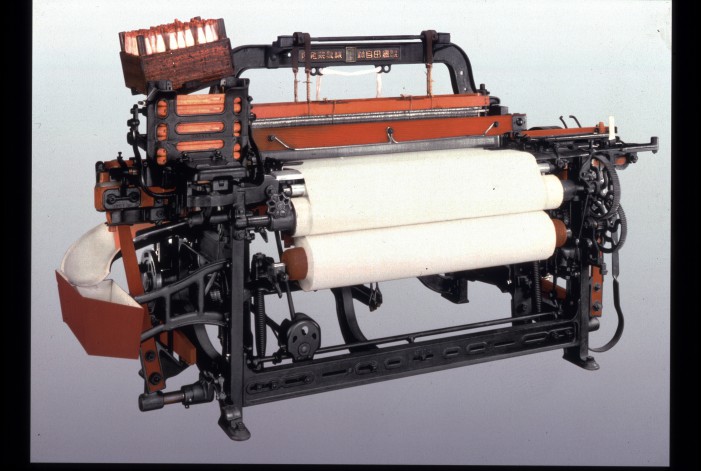
Japan’s first automatic loom
In 1907, Sakichi partnered with investors around Asia and opened up Toyoda Loom Works Ltd. (presently Howa Machinery, Ltd.), but then gave up in 1910, left the company, and travelled to the United States for research. This is where he discovered the potential of the automobile.
The Transition Phase
When Sakichi returned from America, he dreamt of inventing his own car. To pursue this dream, Sakichi sold the patent for his loom to a British firm and financially supported his son, Kiichiro, to start developing the Japanese car industry. Sakichi was far too old by then, but Kiichiro shared his drive and determination to revolutionise the automobile industry in Japan.
Kiichiro turned to the practices his father had developed for his loom business, and adopted these for the new automotive operation, and in 1936 he developed the Toyoda AA. The following year, Kiichiro formed the Toyota Motor Corporation. The reason behind the change from Toyoda to Toyota was because ‘Toyota’ comprised of eight strokes in Japanese script, and this was considered a lucky number.
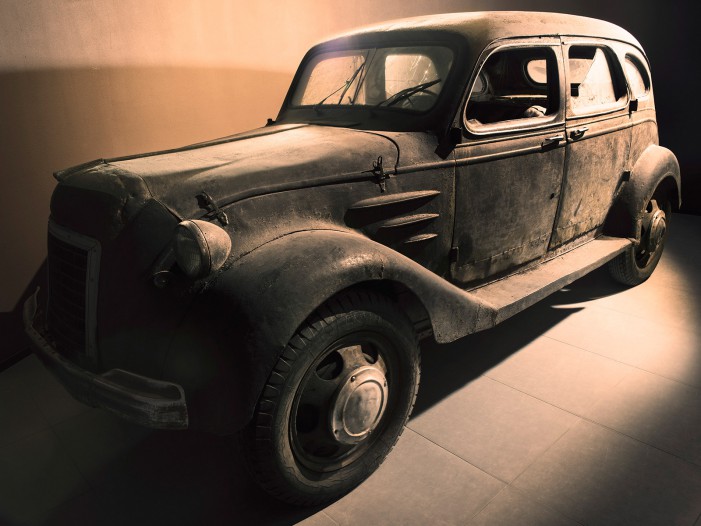
Toyoda AA
Troubled times followed Kiichiro as well. Toyota found it difficult to establish itself, as the automobile market was dominated by American imports. Later, World War II threatened to destroy Kiichiro’s company and his efforts; however, Toyota managed to pull through, and in 1947, the 100,000th Toyota automobile was manufactured.
Kiichiro’s dreams did not end in Japan. He wanted to expand Toyota all over the world and take the brand to where it all began, in America. Unfortunately, Kiichiro passed away in 1952, but passed on his legacy to his son Shoichiro Toyoda. Shoichiro decided that it was not economical to export vehicles to America, and instead opened up Toyota Motor Sales, U.S.A., Inc., in Hollywood California in 1957. In the following year, Toyota began sales of 288 vehicles: 287 Toyopet Crown sedans, and one Land Cruiser.
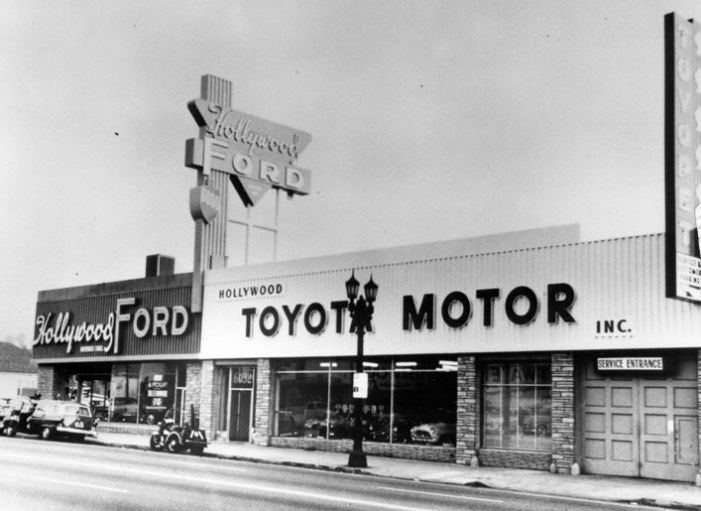
Toyota Motor Sales, U.S.A., Inc., in Hollywood California in 1957. Image courtesy toyota.com
Difficult times continued to follow the Toyoda family when it was discovered that the Toyopet was underpowered when it started stalling on American roads, and the car was far too overpriced for the American market. The Toyopet was discontinued in 1961. The Land Cruiser, however, maintained its reputation as a durable, all-terrain vehicle, and was favoured in the United States until 1965, when the Corona arrived.
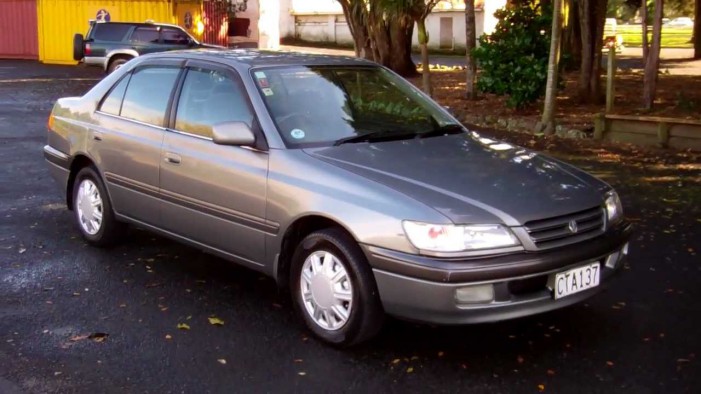
1996 Toyota Corona Premio. Image courtesy YouTube/Cash4CarsNZ
Learning from the oversights of the Toyopet, the Corona was designed specifically for American drivers. It had a powerful engine, air-conditioning, and an automatic transmission. U.S sales increased to over 20,000 units in 1966 and in 1967 Toyota was the third best-selling imported automotive brand in the United States.
In the early 1960s, Toyota expanded its operations to Taiwan, Saudi Arabia, and Brazil. In the following years, Toyota began exporting into Europe and in 1965 it entered the UK market, launching the Corona saloon, and a year after, the Toyota Corolla was released, little known then that today it would become the most successful model range in the world.
Toyota Today
With Akio Toyoda as the current President of the Toyota Motor Corporation, the company continues to run as a family business. Today, Toyota is the largest carmaker in the world with current brands including Toyota, Lexus, Scion, Daihatsu, and Hino. Toyota claims that the core reason for its success is its ability to produce great quality vehicles at the best prices, thereby providing value for money to its customers.
Toyota today has expanded beyond the automobile industry: the brand now covers housing, financial services, e-business, energy, biotechnology, and agriculture, as well as its Marine and Powertrain Units sales business.
Toyota In Sri Lanka
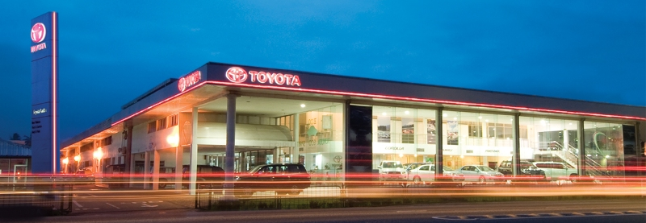
Toyota in Sri Lanka. Image courtesy Toyota Lanka
Toyota Lanka was established in 1995 as a subsidiary of the Toyota Tsusho Corporation. Toyota Sri Lanka does not manufacture cars, but focuses on sales and distribution of Toyota vehicles and spare parts. Toyota Lanka adheres to Toyota’s 3-S concept of sales, service and spare parts, and accounts for 40 percent of the passenger car market share for Japanese vehicles in Sri Lanka.
The company is present in 14 locations across the country and provides employment for over 700 employees.
Even after all these years, the company aims to keep in mind the words of Sakichi Toyoda: “Let your future be lit with the knowledge of the past.”





